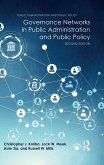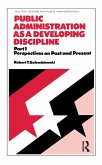How public affairs are run depends upon the degree of authority and control central government decides to relinquish to regional and local governments, and the extent to which it favors citizen involvement in the governing process. Public administrators do not operate in a vacuum. The context within which decision-making takes place greatly influences public administrators' approach to public issues. Consequently, what government decides to do and how it decides to carry it out affects the lives of people and how people perceive their role in the unfolding of public affairs. While public administration varies from one country to another, public administrators inevitably face similar challenges. Running a government is not easy; it is complex, dynamic, contested, supported, subject to special interests, both demand- and supply-driven, just to name a few. In executing government functions, public administrators unsurprisingly contend with major decision-making questions. While obviously not exhaustive, this book addresses some key issues challenging practitioners. These challenges include questions on what gets included in the policy agenda, questions on policy response to problems through adoption and/or adaptation of exogenous policies, questions on the dangers of displacing policy goals, questions on transferring government activities to specialized agency, questions on decentralizing powers to regional and local governments, questions on combating corruption, and questions on managing public resources. It is widely recognized that policy implementation is much more challenging than its design. Nonetheless, it is the manner in which public administrators address these challenges that creates opportunities for a more effective long-term policy prioritization, design and coordination, a more effective and inclusive public governance, and a more effective use of public resources for the delivery of needed public services.
Hinweis: Dieser Artikel kann nur an eine deutsche Lieferadresse ausgeliefert werden.
Hinweis: Dieser Artikel kann nur an eine deutsche Lieferadresse ausgeliefert werden.








